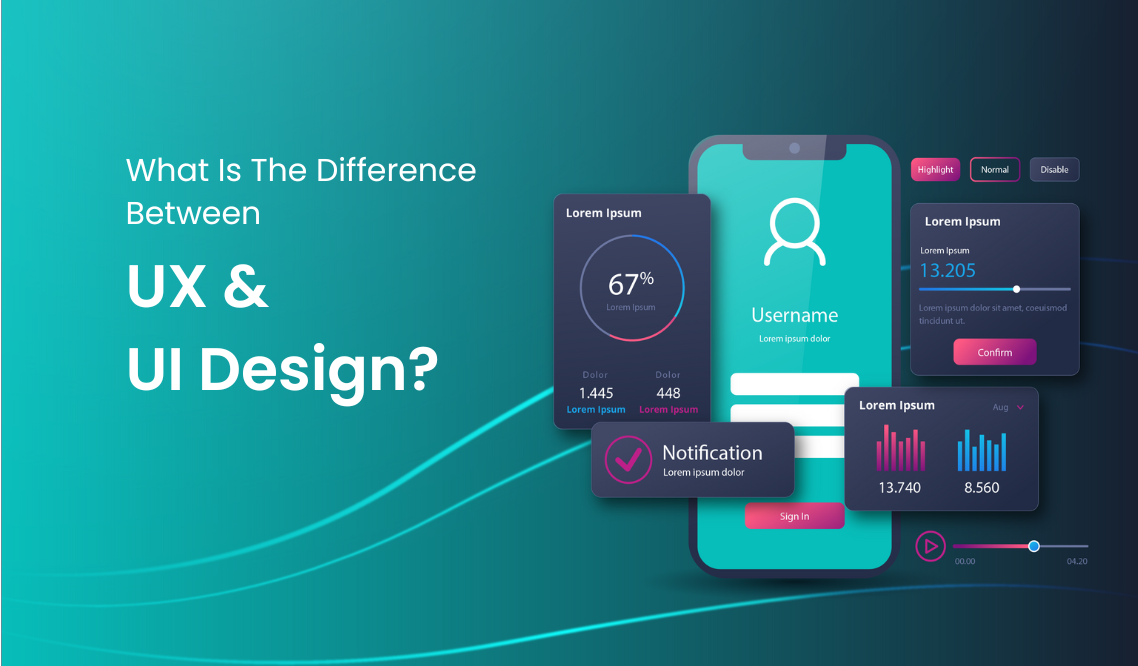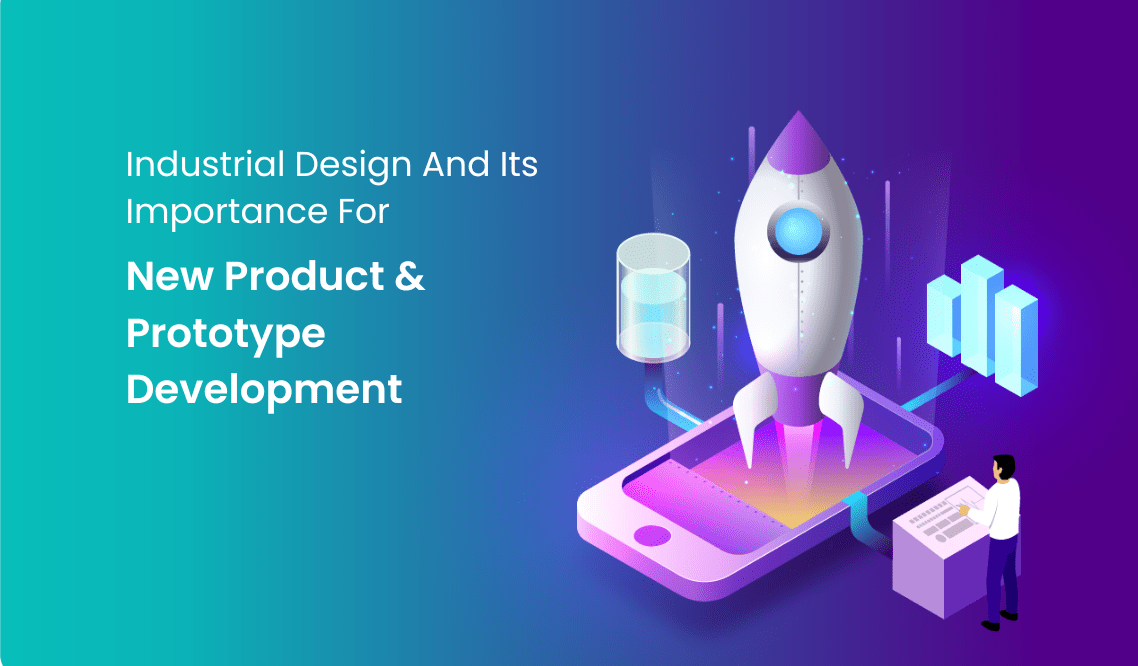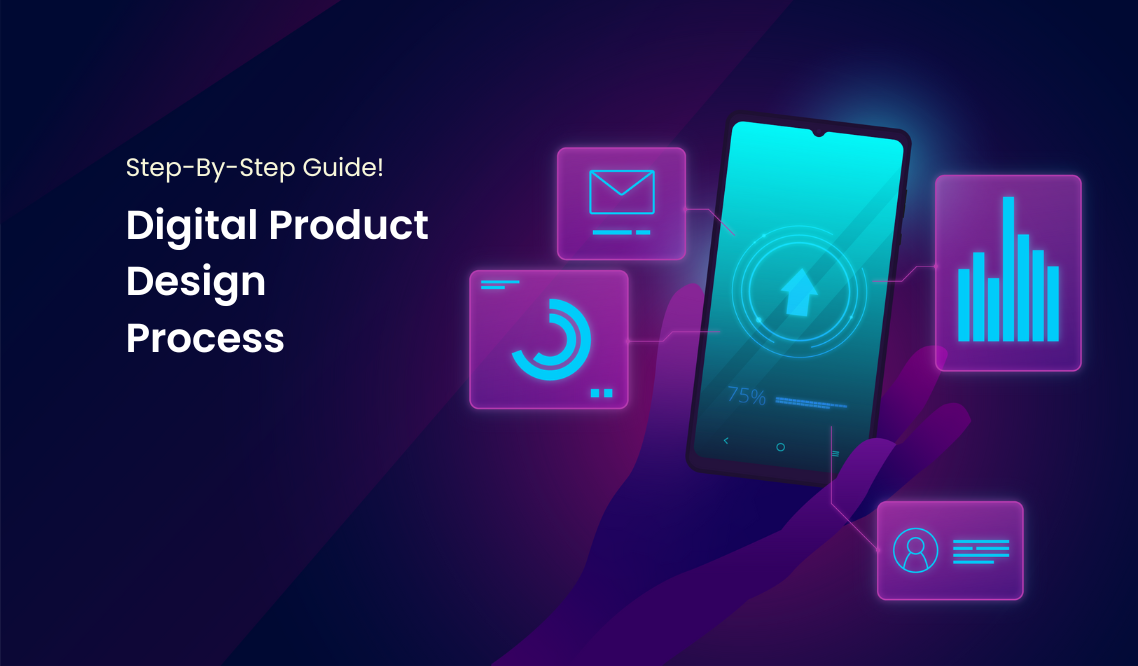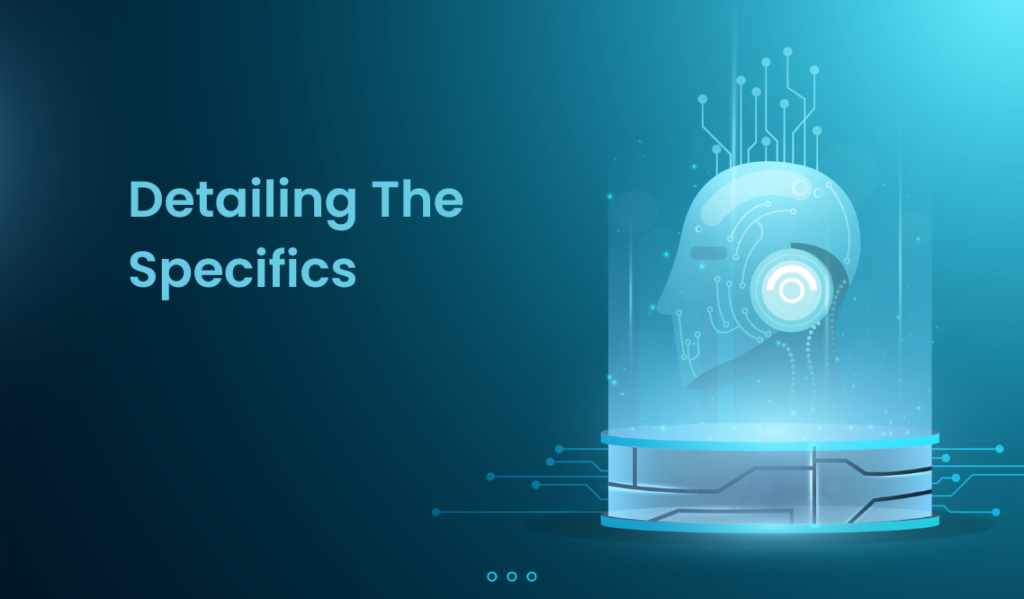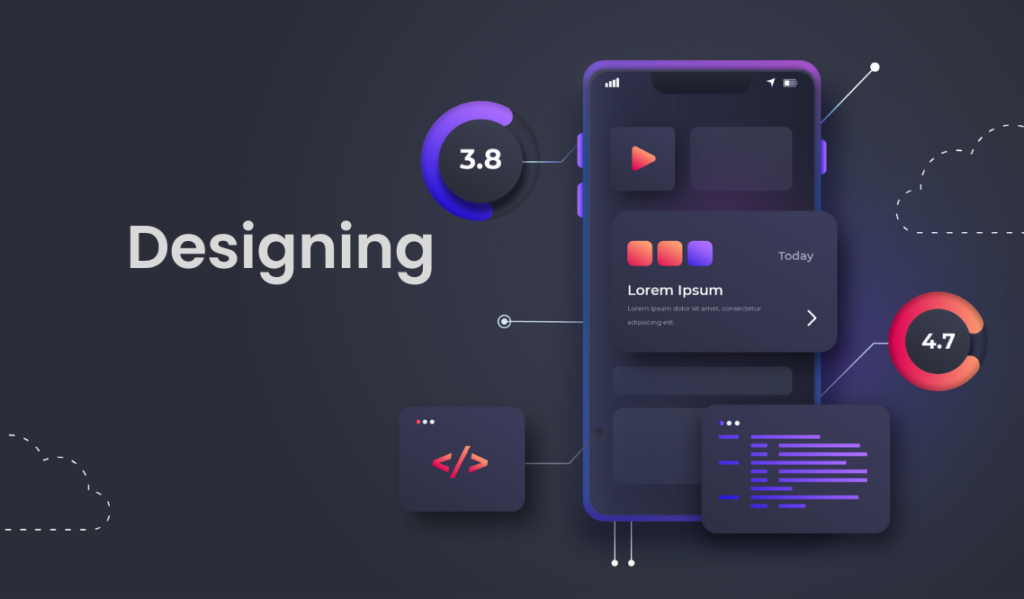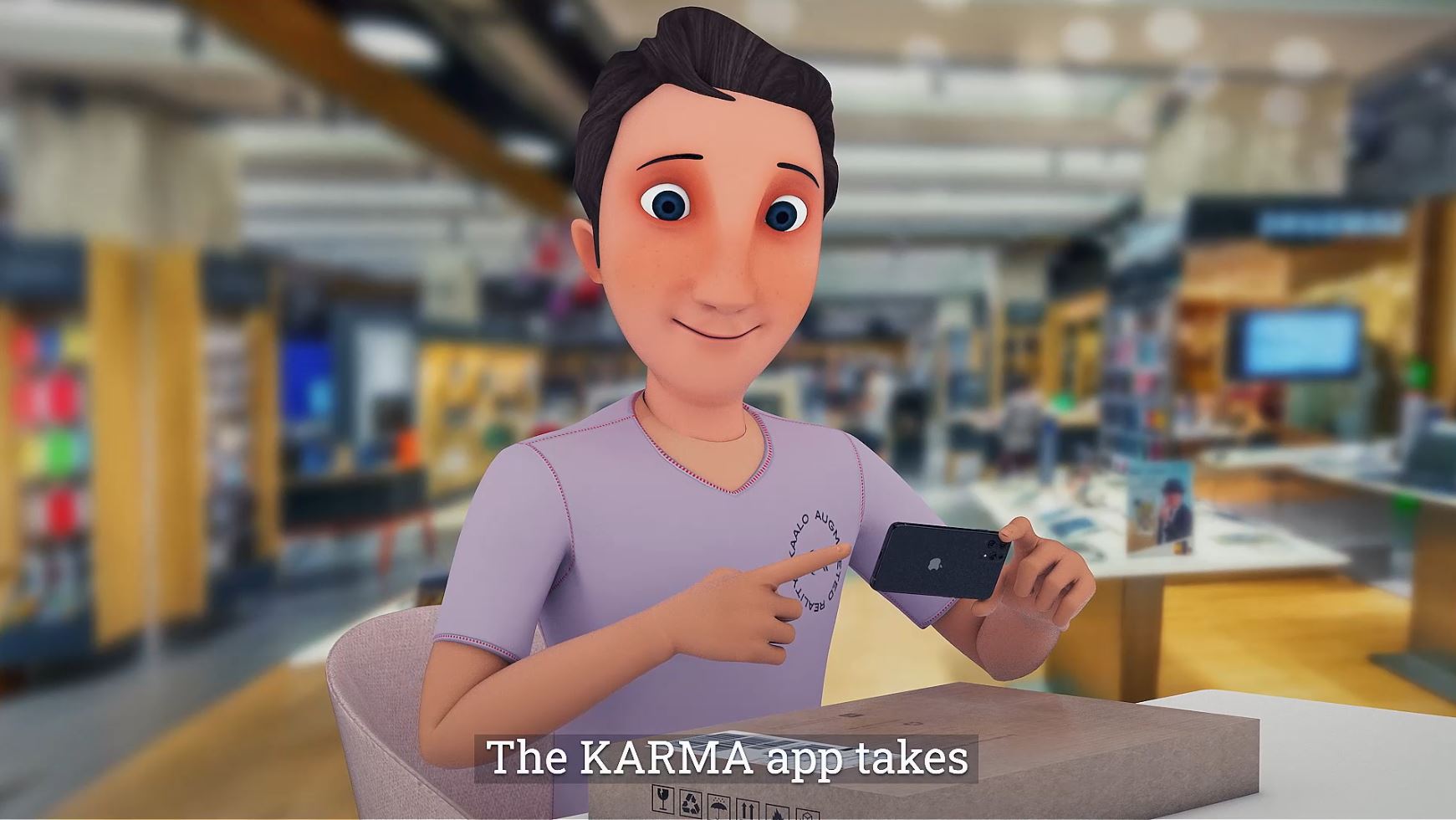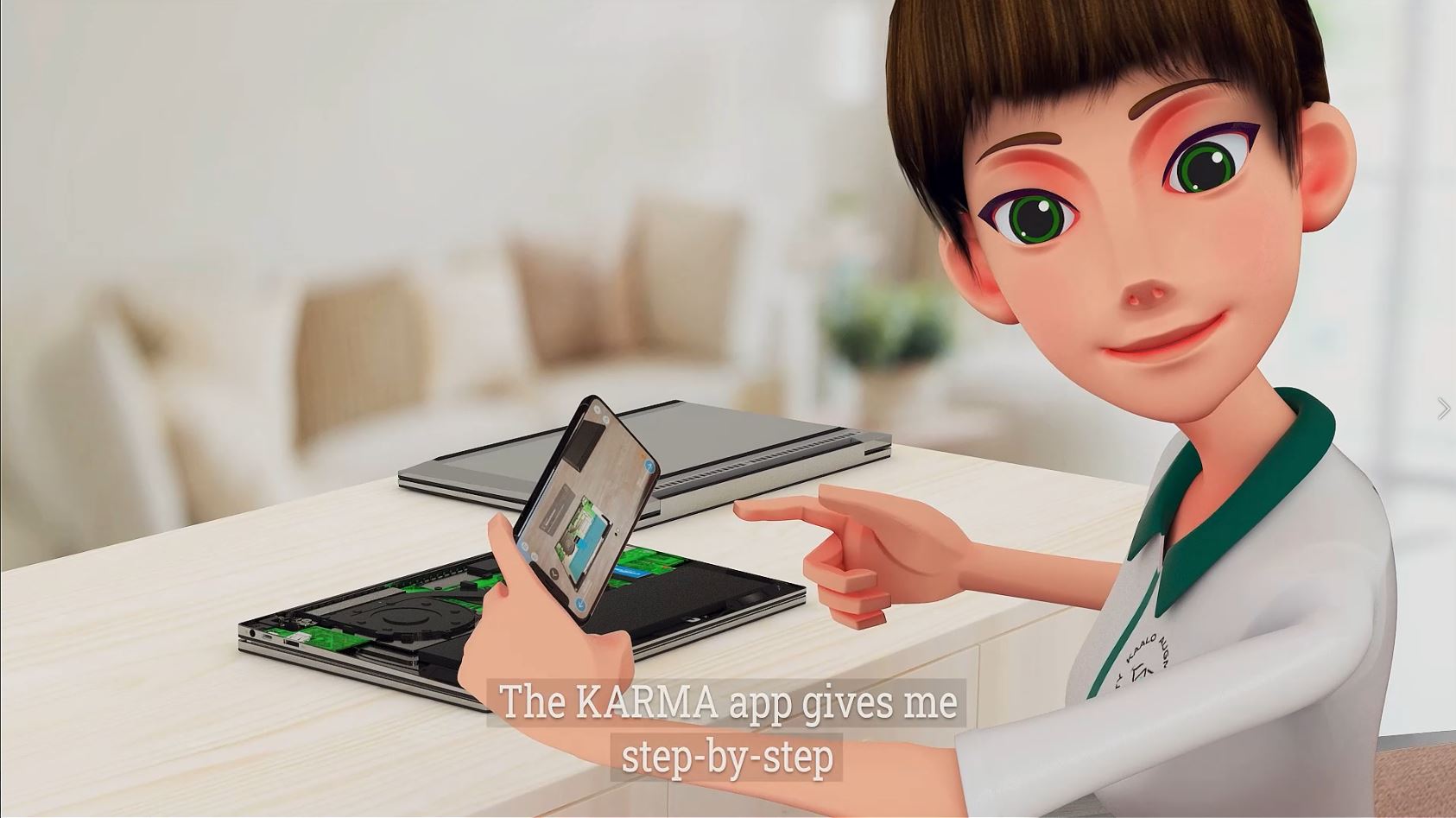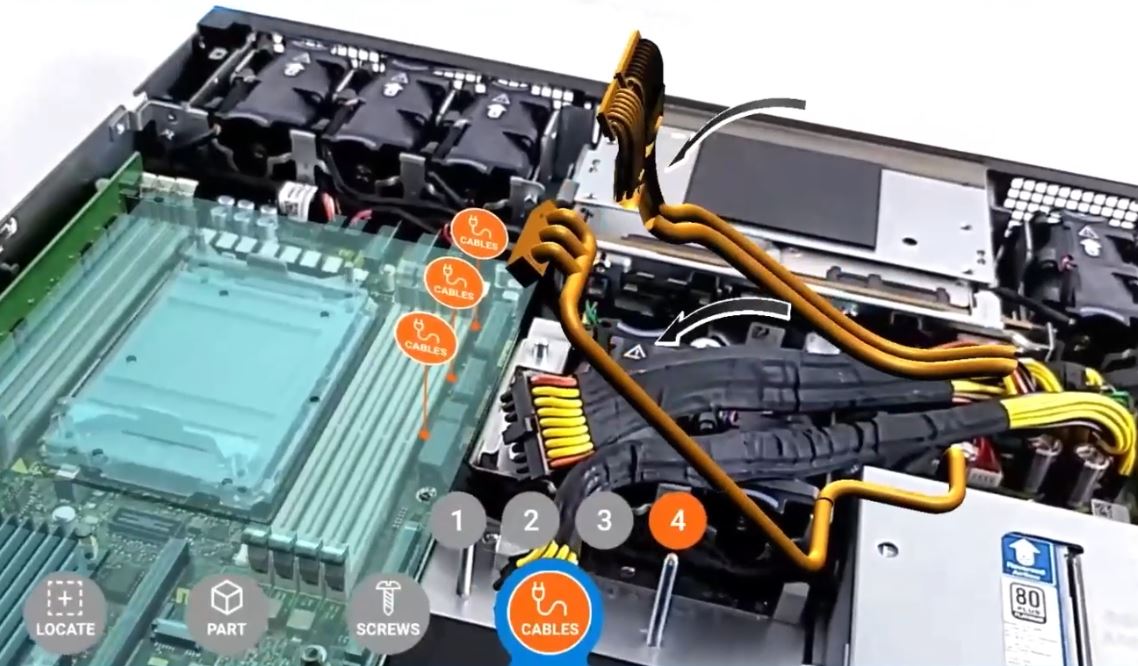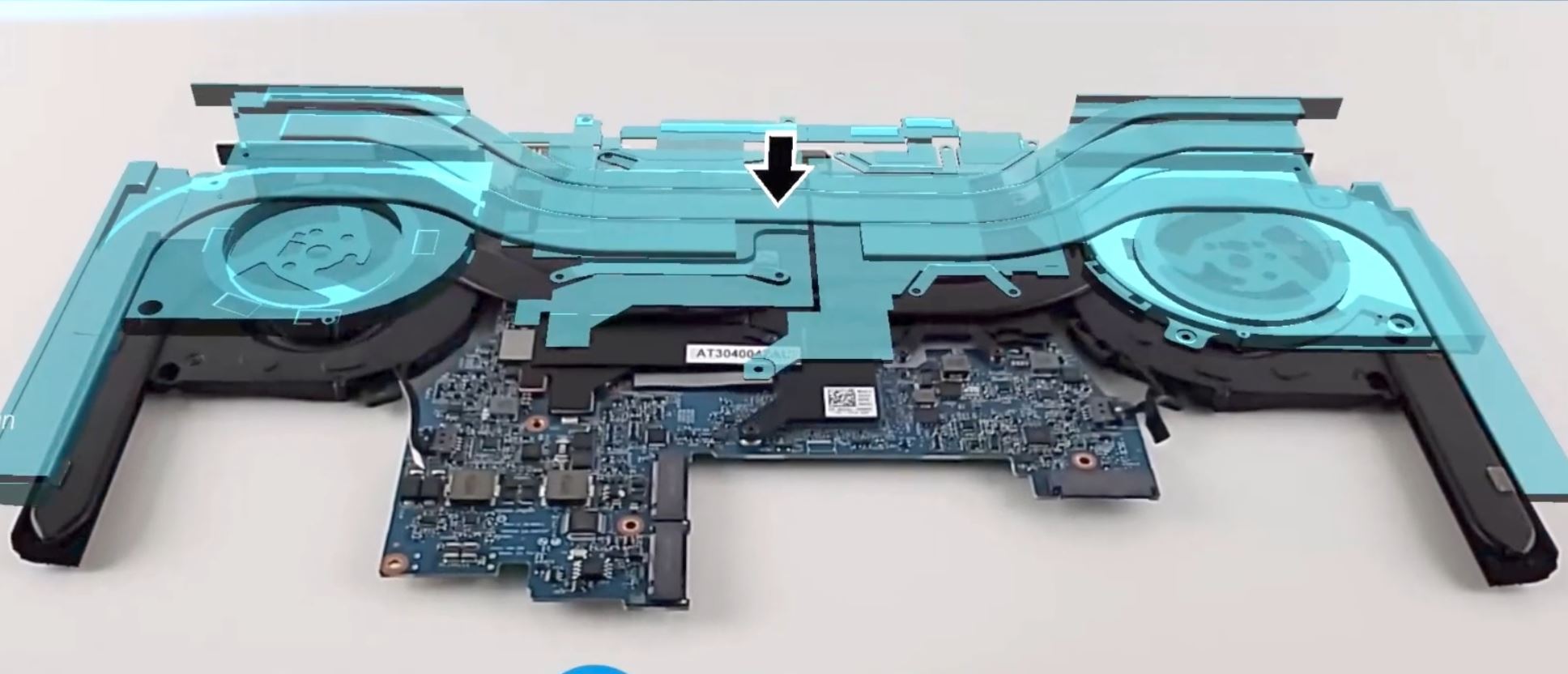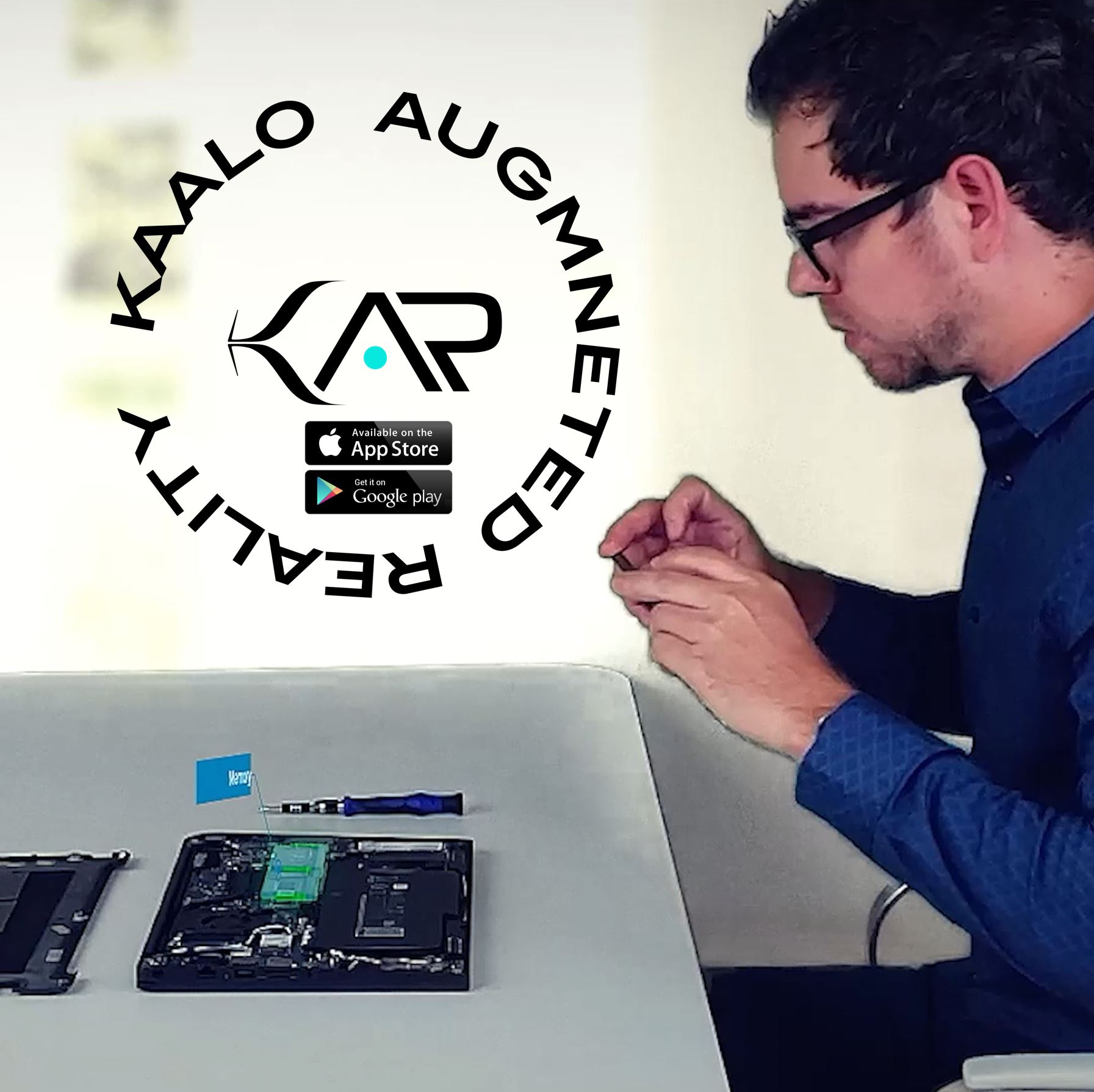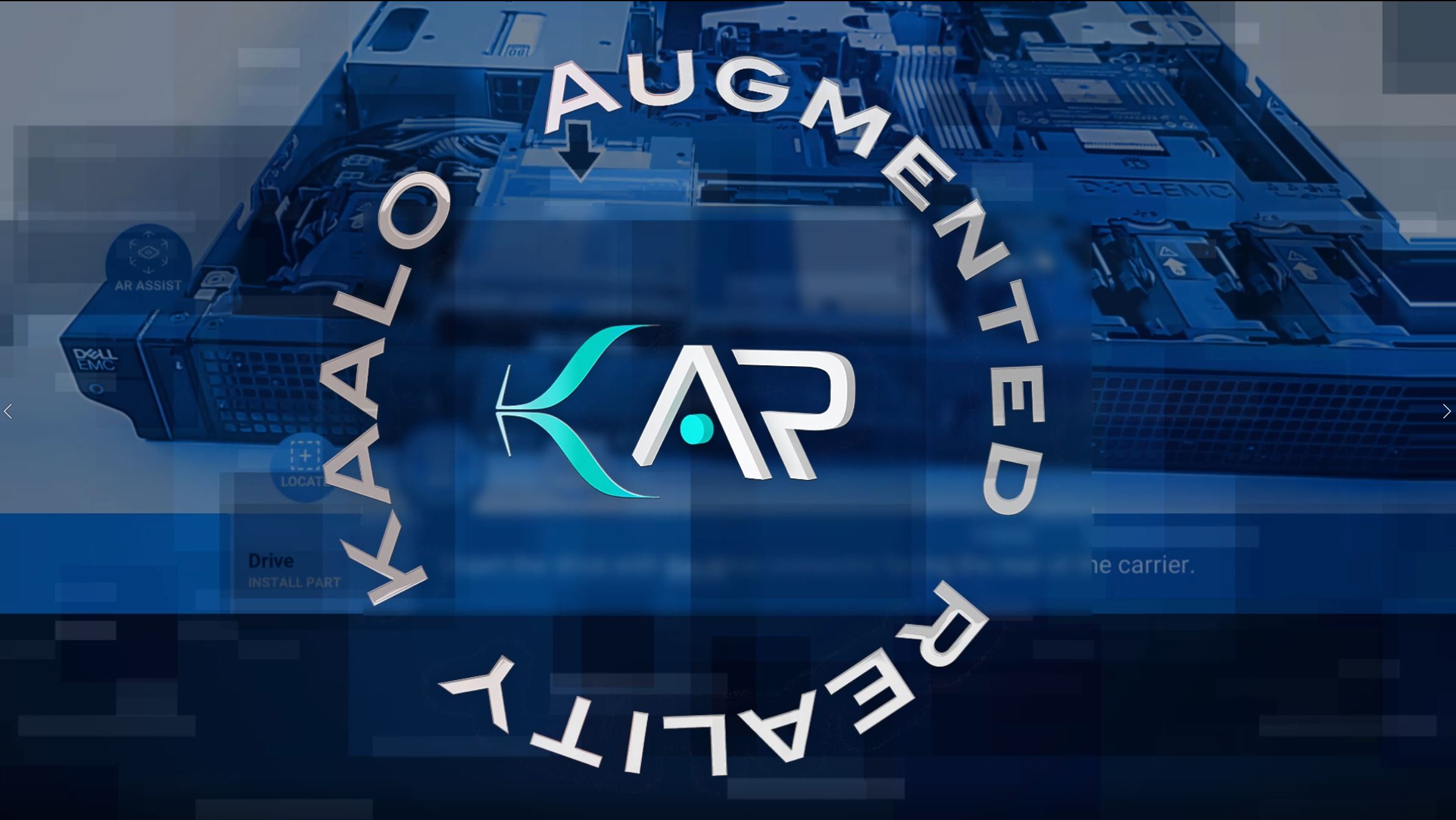Are you curious about the distinction between UI and UX? If yes, then you’re in the right spot.
Although they are frequently used together, UI design and UX design actually refer to quite distinct concepts.
The user interface (UI), at its most basic level, is a collection of screens, pages, and visual components (such as buttons and icons) that allow a user to engage with a product or service.
User experience (UX), on the contrary, is the inside knowledge that a person has as they engage with each component of a company’s products and services.
There are a few well-known arguments in the field of design that are never truly resolved. The distinction between user interface and user experience design is among the most significant.
To find out more about the differences between UX & UI design, keep reading!
What is UI design?
The process that product design companies or designers use to create user interfaces in software or computerized devices with an emphasis on aesthetics or style is known as user interface (UI) design. It creates and enhances the level of interaction between the user and the program.
The process of converting wireframes into a finished graphical user interface is known as UI design. Typography, pictures, and other visual design components are also used in user interface (UI) design to make a simple interface comprehensible and useful.
The user interface (UI) is a particular design asset that users engage with, and it is primarily used by the digital industries.
Each component of the product, such as buttons, text, images, and other visual interface components that users engage with, is improved by the process.
What is UX design?
User experience design puts the needs of customers first when creating goods.
A successful user experience is a crucial component of product creation.
UX Design entails monitoring a variety of development-related factors, evaluating how they interact, and developing solutions and enhancements that will make the user experience easier, more understandable, and all-around better.
Providing a technically solid experience for users on your website is the emphasis of the UX design methodology. With UX design, you concentrate on giving your guests a practical and uncomplicated experience.
UX design, also known as user experience design, is the process of developing goods that offer users meaningful and pertinent online experiences. It entails the steps taken in the processes of product creation, branding, integration, and acquisition.
UI design Vs UX design – The Major differences!
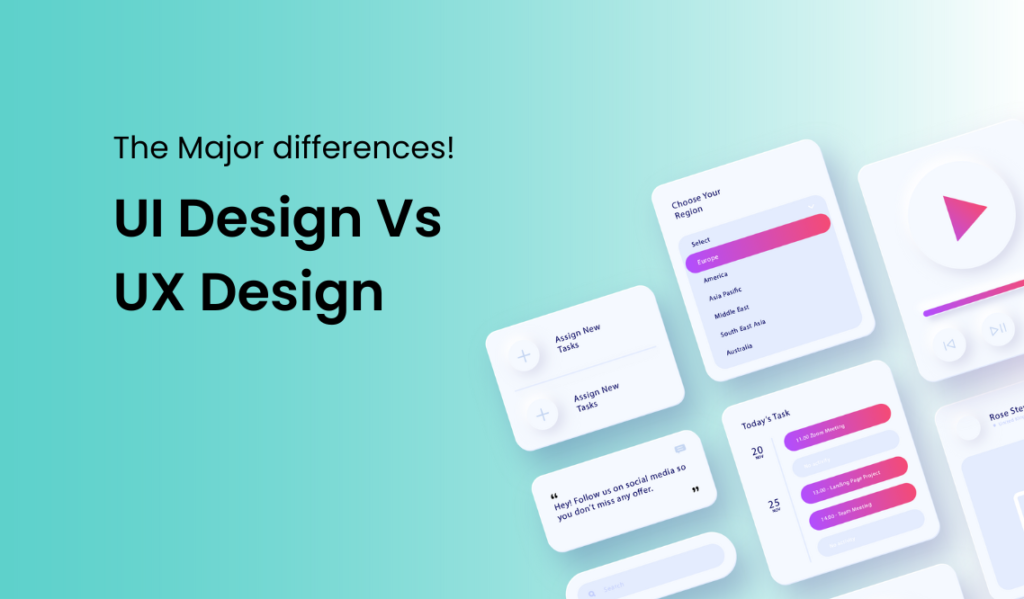
Approach – The UI vs UX differences!
While UI is focused on how a product’s surfaces appear and work, product design companies dealing with UX are concerned about the user’s journey to solve an issue.
Everything, good or negative, on-screen and off that influences the way the user proceeds toward resolving that issue is the primary objective of UX design. The surfaces of the product are the main emphasis of UI design.
User experiences continue throughout and have a significant impact on the product, whereas the user interface is only a small part of that journey.
Responsibilities of UI vs UX designers
Check out the distinctions between the responsibilities of UI and UX designers.
The following are the duties of UI designers:
- Choosing typefaces and colour schemes.
- Creating interactive components like scrollers, controls, toggles, drop-down menus, and text boxes.
- Work with programmers to turn a concept into a functional product.
UX designers are responsible for the following:
- Undertaking user research to verify design choices and discover problems.
- Creating prototypes to get a sense of the finished product’s appearance.
- Creating user profiles depending on prospective customers.
Focus – The difference between the UI and UX
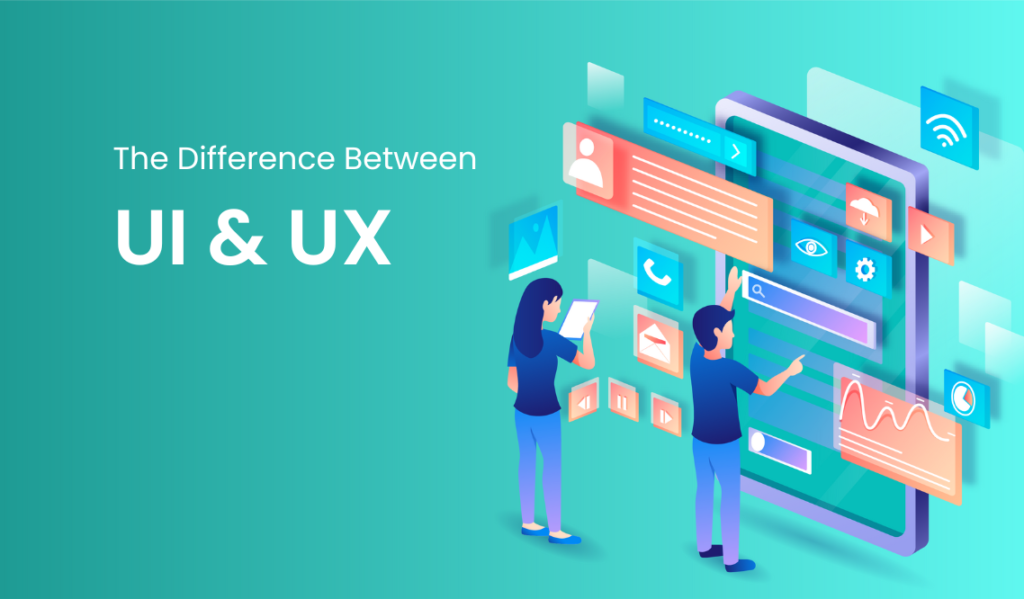
The web design methodology is the key distinction between UX and UI design.
With user experience design, the technical elements of your website are the main emphasis. UX design concentrates on how visitors to your site interact with it. It focuses on developing procedures that are simple to understand and cause users the least amount of frustration in order to create an effective relationship between the user and the business.
With user interface design, the visual elements of your website are the main emphasis. The user interface (UI) of your website concentrates on how it looks and makes users feel while using it. There is a lot of focus on graphic design and producing tangible components that offer a positive user experience when considering the user interface of your website.
To conclude
In conclusion, differences between UI and UX design both play crucial roles in creating successful digital products. While UI design focuses on the visual aspects of a product, including its layout, colours, and typography, UX design emphasises the user’s overall experience and aims to make the product easy to use, efficient, and enjoyable.
While it is essential to have an aesthetically pleasing UI, it is equally important to have a user-friendly UX. The two should work together seamlessly to create a seamless user experience. A great product should not only look good but should also be intuitive and easy to use, catering to the user’s needs and preferences.
Ultimately, the success of a digital product is dependent on the user experience, and a well-designed UI and UX are key components of a successful product.
If you are looking for best-in-class UI/UX design services, then Kaalo Design’s experts have got you covered!
